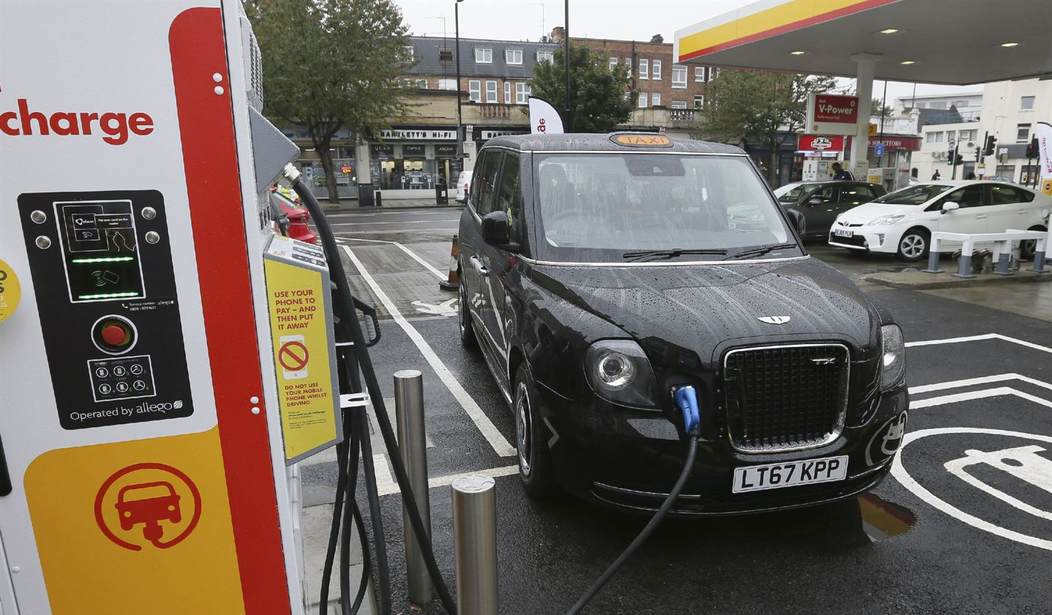Times are hard for purveyors of electric vehicles, and it doesn't look like this is likely to change any time soon. These cars and trucks are, properly, niche vehicles. They can be great for urban commuters; our youngest daughter has a Ford Fusion hybrid, and since 90 percent of her driving is back and forth to work, a round trip of about ten miles, the plug-in hybrid works great for her. That's where these things are best; in certain markets, like urban and suburban commuters. There, they work well enough.
That's how these things should be decided. But leave it to the various levels of government to stick their oar in. Subsidies and other incentives have pushed EV sales to well above what the market would ordinarily realize. These things, sooner or later, always even out; markets can be messy, but they generally get things right if left alone.
The market for EVs may be starting to get it right now. A recent AAA survey indicates that potential buyer interest in EVs is dropping.
Every year, AAA surveys Americans to find out what cars they plan to buy, and why. This year’s survey has bad news for EV enthusiasts — like most CleanTechnica readers. In the latest survey, AAA found that “only 16% of US adults report being ‘very likely’ or ‘likely’ to purchase a fully electric vehicle as their next car, the lowest percentage recorded of EV interest since 2019. The percentage of consumers indicating they would be ‘unlikely’ or ‘very unlikely’ to purchase an EV rose from 51% to 63%, the highest since 2022.”
Good. Market forces, not government, should make these decisions, and since some of these subsidies are now fading into the sunset, that appears to be what's happening.
The road to adoption of Zero Emissions Vehicles (ZEVs) is growing steeper. For over two decades, states used incentives and mandates to try to force a transition from gasoline vehicles to ZEVs. But softening market demand, shifting federal policies, and poor economics threaten to halt the ZEV revolution in the United States.
The primary argument for electric vehicles, and the primary reason they are a major virtue-signal among the climate scolds, is emissions. These are not, of course, "zero emissions," any more than any coal-fired or gas-fired power plant is, for precisely the same reason; they simply shift the emissions to a different location. What's more to the point, those of us who remember the leaded-fuel-powered cars of the '60s and '70s remember the tailpipe emissions from those old benzene-burners and what these fumes did to our major cities; to put it bluntly, it was a mess. But modern automobiles are much more efficient, and produce far fewer emissions - two sides of the same coin, in fact.
To combat worsening air pollution, all states enacted legislation by 1970. Congress passed the Clean Air Act in 1963 and established the Environmental Protection Agency (EPA) as part of the Clean Air Act of 1970.
Early vehicle pollution regulations were enormously successful eliminating harmful vehicle exhaust. Unleaded gasoline, catalytic converters, and particulate filters dropped volatile organic compound emissions per mile by 98 percent from 1970 to 2023. Carbon dioxide (CO2) and water vapor remain the only significant gases exhausted from today’s gasoline vehicles.
These are not trivial indicators. The fact is that modern cars and trucks are cleaner than they have ever been, and the air over our major cities stands as testament to that. That makes the argument for "zero-emissions" vehicles less compelling.
Read More: Tesla Troubles: Cybertruck Sales in a Tailspin
What Does a $19.5 Million EV Charger Look Like? Ask Pete Buttigieg.
And, finally, electric vehicles are not only more expensive, but have other considerations, such as weight, range, and more, that preclude their use in many areas.
The average US electric car purchase price in May was $57,734, about 17% higher than the average price for a gasoline car. Cancellation of the EV purchase tax credit will push this difference to over 20%. Electric trucks and buses are two to three times as expensive as diesel alternatives.
Thousand-pound EV car batteries are needed for a driving range approaching that of internal combustion engine (ICE) cars. As a result, EVs tend to be about 50% heavier than ICE cars. The 2024 Chevy Silverado EV weighs over 8,000 pounds, a four-ton pickup truck! Greater weight means that tires wear out sooner, raising maintenance costs. States receive no gasoline taxes from EVs, so states are now imposing EV license fees for road maintenance. EV road fees should be higher because of their weight.
Heavier vehicles are more dangerous in collisions. The lithium-ion batteries used are a fire risk, and when these things burn, they burn frighteningly hot, and special equipment is required to put them out. Even in minor collisions, a battery replacement is often required - and those batteries are expensive. The increased weight of these vehicles means more and faster wear on tires, on roads, and even suspensions.
All of these things matter to buyers. Buyers, as we would expect, are starting to figure these things out.
There is, of course, no constitutional justification for the federal government to be subsidizing electric vehicles, and the Trump administration is rolling those back. That's an unalloyed good thing; while some states will still push these kinds of subsidies, the market is a little freer, false economies are less prevalent, and as is always the case, people will make these buying decisions based on enlightened self-interest.
Practical considerations differ from buyer to buyer, as I noted above. A vehicle that works for an urban commuter won't work for a guy living out in the woods. Those factors, not government subsidies, should be the only factor. And those practical considerations are very likely to be the reason that EV sales are dropping off.















